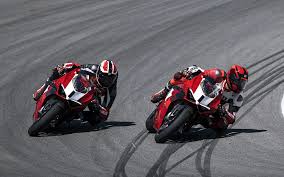In 2000, I made the first several climbs up to the Sestriere ski resort. It was a beautiful September day as I toiled the seven-mile climb. At several point on the way up, I was riding through avalanche tunnels--they are a roof over the road, open on the cliff side.
It's dark inside the tunnels, not totally but dark compared to ride in bright sun. As I rode through first tunnel I could hear the roar of
Ducati race-replica motorcycles climbing between the turns, then the odd silence as they coast through the hairpins and roar to life again out of the turns.
I have this experience before on Mount Palomar in San Diego county. But there are no tunnels on Mount Palomar. As the bikes got closer I pedaled faster, not that it would make any difference, but I wanted to get out of the tunnel. I had a sudden vision of the bike at the back of the group moving right to pass one of his mates then slamming into me.
The roar went from deep rumble to deafening howl as the pack swung out of a hairpin and accelerated into the tunnel. The tunnel had about a six percent grade so the roar swelled as they approached, throttles wide open. I put my head down and kept pedaling. I could see the end of the tunnel. I hoped the roaring bikes could see me.
Then it was over. The bikes flew past me in a line. Clearly they had passed many bicyclists on this mountain. They shot from the tunnel into the light and disappeared. I continued to pedal, a little more slowly.
Mount Palomar has many more motorcycles than any alpine climb I have ridden, but they are almost always single or in pairs. They also are mostly four-cylinder high-revving Hondas, Kawasakis and Suzikis. When they were near me in a turn, I could hear the best riders dragging the hockey-puck pad on their knee as they leaned into the turn at 45 degrees or more.
Only on Sestriere did I have packs of motorcycles fly past. In 2005, three different packs flew past me on my way up.
Usually, the excitement on these rides is descending and feeling the rush of speeding around the hairpin turns. On this ride, the biggest rush was the pack of Ducati race-replica motorcycles that shot past me on the way to the summit.
-------
On Tuesday, July 2, 2024, the Tour de France will climb to Sestriere then to Col de Montgenevre, through Briancon, up to Col du Lauteret on the way to Col du Galibier then downhill to the finish in Valloire.








































